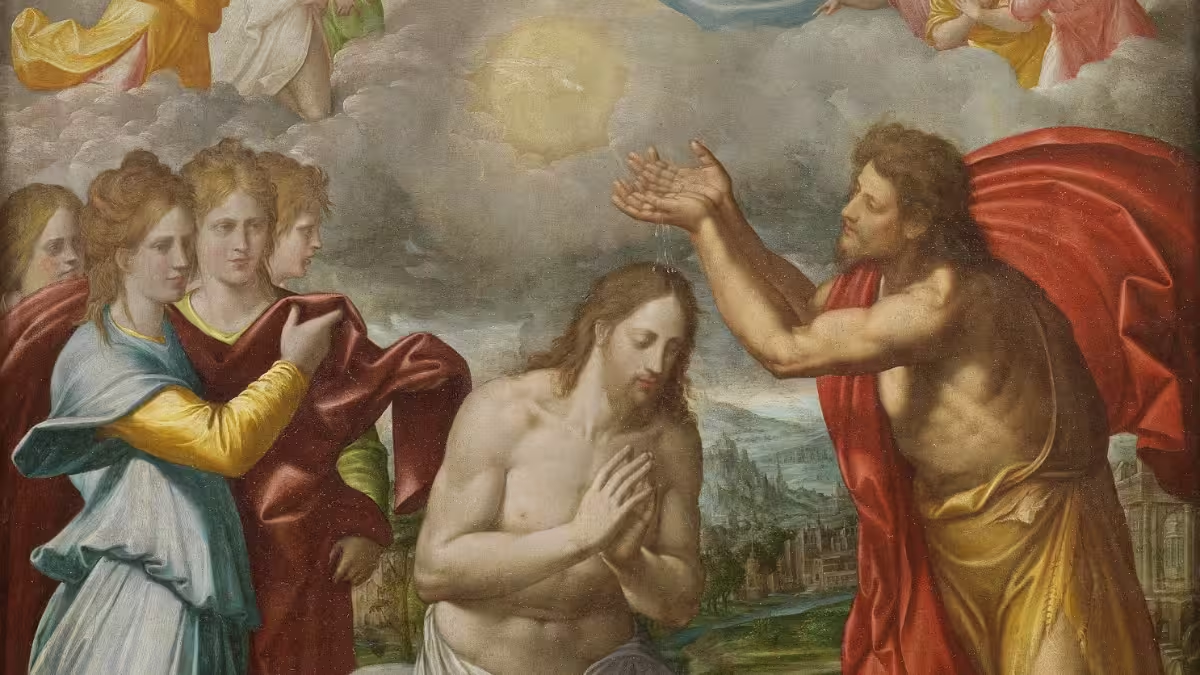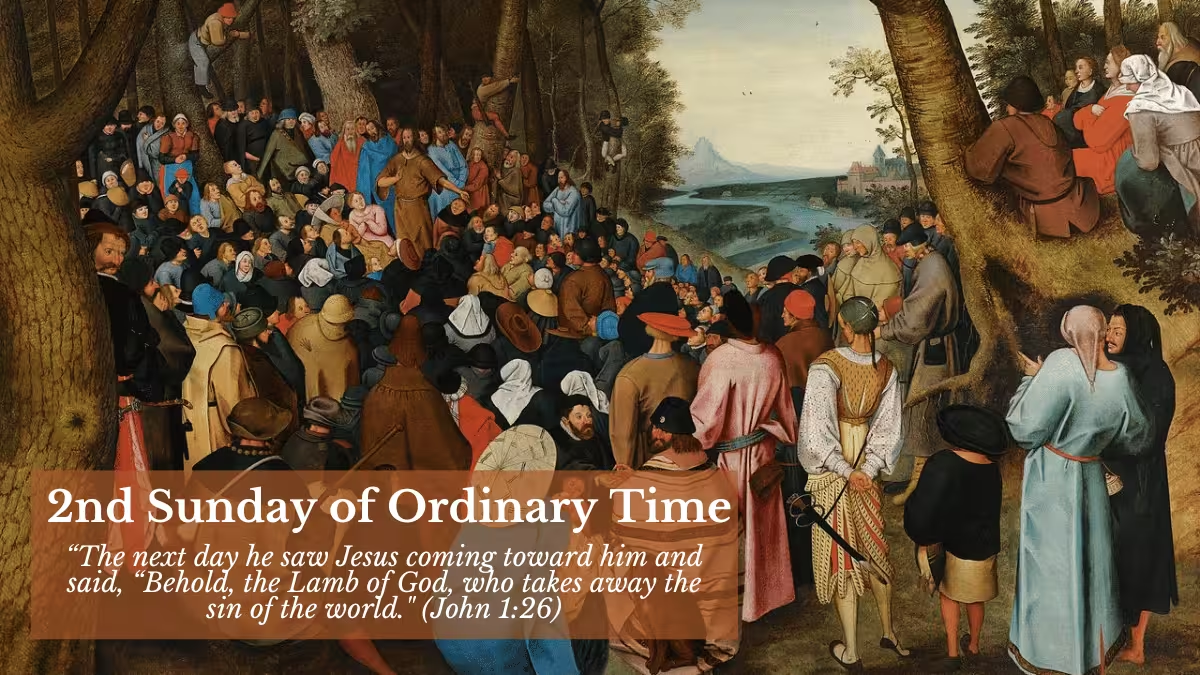Bible on the Back Porch
Reading, pondering and studying God’s Word is sometimes best done “on the back porch.” Each week we will try to offer something for you and your “back porch time.”

Feast of the Holy Family, Year A
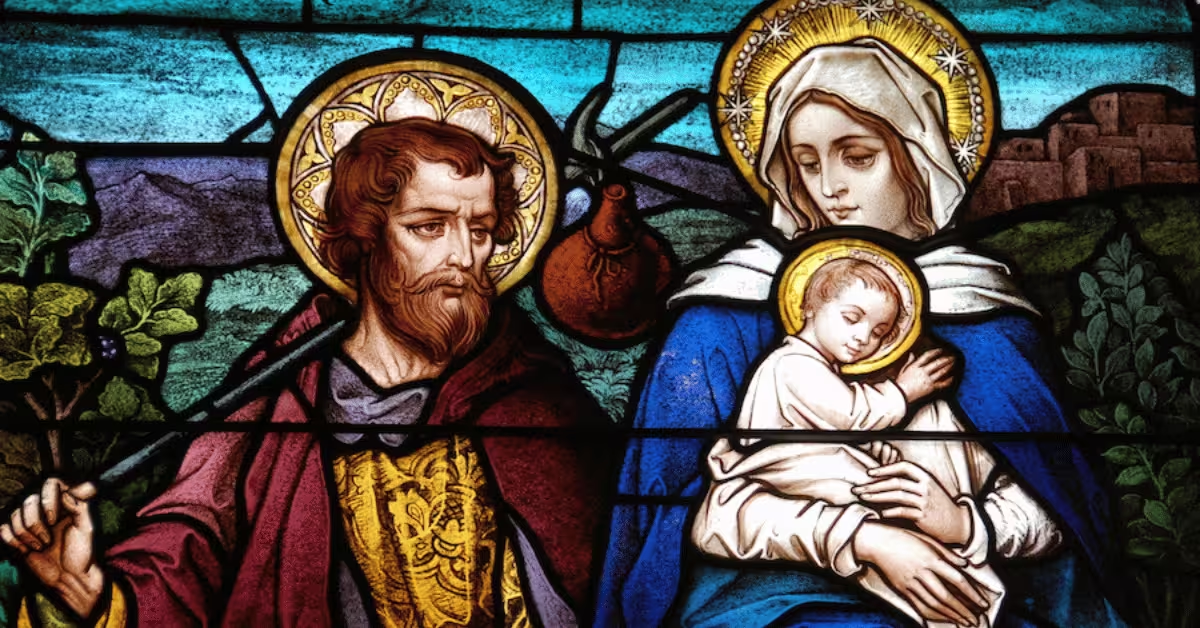
Travels and Travails
As a general theme, life after Christmas is not all that peaceful for the Holy Family. Following the birth there is anger and murder, weeping and wailing, moving and resettling. In the same way, after our Christmas celebrations we are again confronted with the fact that the kingdom has not fully arrived. The “peace on earth” sung by the angels at Jesus’ birth (cf. Luke), is followed by death and destruction, suffering and evil. Follow the travels and travails of the Holy Family as they escape Herod’s rath by fleeing to Egypt, returning years later.
As always, a lot going on in the gospel reading. Grab a cup of your favorite beverage and take a moment on the back porch with the Word of God.
Full Text of the Sunday Gospel
Detailed Commentary
Stained glass window, Sts. Joseph & Paul Catholic Church, Owensboro KY | PD
The Epiphany of the Lord, Years A,B & C
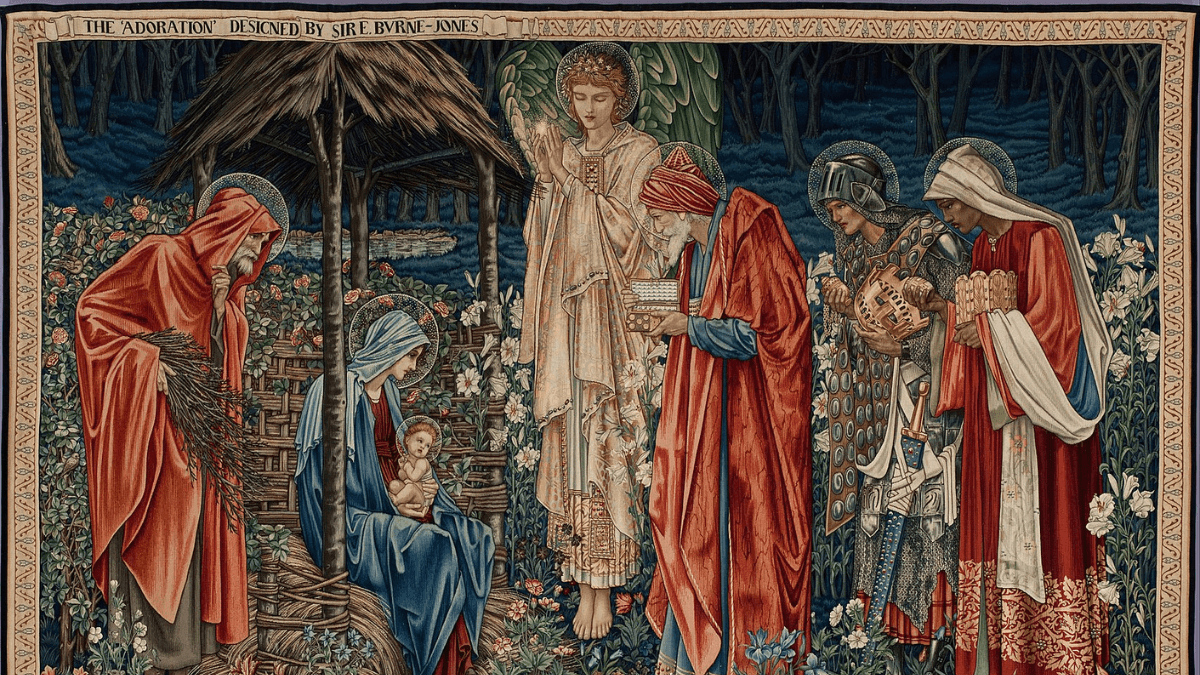
What We Celebrate
Soon after Christmas western Christianity celebrates the Epiphany of the Lord. The word comes from the Greek epiphaneia meaning “manifestation” or, “striking appearance.” The feast had its origins in Easter Christian Churches and was a general celebration of the manifestation of the Incarnation of Jesus. Originally its scope was more broad. It was a celebration of a number of events in scripture that revealed Jesus to the world. Those events included: the commemoration of his birth; the visit of the Magi to Bethlehem; all of Jesus’ childhood events, up to and including his baptism in the Jordan by John the Baptist; and even the miracle at the Wedding of Cana in Galilee. In western Christian Churches the focus has rested primarily upon the Visit of the Magi.
Who are the Magi? They are not kings, probably not from Persia, and yet there was something that drew them to visit the Christ child. St. Matthew, writing to Jewish audience, makes all kinds of Old Testament references that would be familiar to the 1st century audience – but not necessarily to us. It is all part of Matthew’s overall narrative intent: Jesus is the fulfillment of all that was promised by the prophets.
There is a lot more to this gospel. Sit with it for a moment on the back porch.
Full Text of the Sunday Readings
Detailed Commentary on the Gospel
The detailed commentary has lots of information about King Herod, the Magi, the star and lots more!
Image Credit: The Adoration of the Magi by Edward Burne-Jones (1904) | Public Domain- US
Baptism of the Lord, Year A
"This is my beloved Son..."
After Jesus was baptized, he came up from the water and behold, the heavens were opened (for him), and he saw the Spirit of God descending like a dove (and) coming upon him. 17 And a voice came from the heavens, saying, “This is my beloved Son, with whom I am well pleased.” (Matthew 3:13-17)
Why is John baptizing? Why did Jesus agree to be baptized and what did it all mean? The heavens open, the Spirit descends and God speaks from above. As always, there is a lot going on in these gospels. Take a moment with a cup of joe and the bible on the back porch.
Full Text of the Sunday Readings
Detailed Commentary on the Gospel
The Baptism of Christ, Juan Fernández de Navarrete, “El Mudo” | Museo del Prado, Madrid | Wikimedia Commons | PD-US
One the questions that usually arises in association with this Feast is “Why was Jesus Baptized?” The detailed commentary addresses this in detail, but it you’d rather watch a video on the question, the two videos below are pretty good starters.
2nd Sunday, Year A
The Lamb of God
The next day he saw Jesus coming toward him and said, “Behold, the Lamb of God, who takes away the sin of the world. (John 1:29)
Each year the gospel for the 2nd Sunday in Ordinary Time is taken from the first chapter of the Gospel according to John. The purpose for this is essentially the same – following the baptism of the Lord, which reveals the relationship of the Father to the Son and to the Holy Spirit – this week’s gospel reveals the relationship of Jesus to the disciples. And perhaps no one does so more robustly than the Fourth Evangelist.
The fourth Gospel is a book of “signs;” namely things, events, and people who point to something else. Such “intermediaries” are generally necessary in this gospel in order to come to faith. Even Jesus is a type of intermediary as the logos – the “Word” or “Revealer” of God. The theme and purpose of the “signage” becomes clear in John 20:31 – “But these are written that you may (come to) believe that Jesus is the Messiah, the Son of God, and that through this belief you may have life in his name.” This gospel itself is a “sign” to point us to the Messiah, who is a “sign” who points us to God. As O’Day (524) states about this gospel: “… the story of Jesus is not ultimately a story about Jesus; it is, in fact, the story of God.” It is to this that John testifies: “Now I have seen and testified that he is the Son of God.”
There is a lot more to this gospel. Sit with it for a moment on the back porch.
Full Text of the Sunday Readings
Detailed Commentary on the Gospel
Saint John the Baptist Preaching to the Masses in the Wilderness | Pieter Brueghel the Younger | Galerie de Jonckheere, Paris | Wikimedia Commons, PD-US
The Lamb of God
When the Jewish people were slaves in Egypt, they were liberated by God through Moses in the Exodus. Egypt did not want to free the slaves, so God sent a series of plagues to convince the Pharaoh to let the Jewish people go. The last of these plagues was the death of every firstborn male (Ex. 11:1–12:36). The Jewish people were spared from this plague by marking their doors with the blood of an unblemished lamb that God had commanded them to eat (Ex. 12:3-13). The blood of this lamb saved the Jewish people from the plague of death and resulted in their liberation from slavery.
Similarly, the death of Jesus saves us from eternal death and slavery to sin. This connection was foreseen by the prophet Isaiah who spoke of the Messiah as a sacrificial lamb (Is. 53:7) and John the Baptist who foretold the saving death of Jesus by calling him the Lamb of God (John 1:29). The author of the Gospel of John employs this imagery by stating that Jesus was sentenced to death at the same hour that the Passover lambs were being slaughtered (John 19:14) and by pointing out that none of his bones were broken (John 19:36), the same as the Passover lamb’s bones were not to be broken (Ex. 12:46).
Every time the Eucharist is celebrated, we believe that Calvary is mysteriously made present in our midst. We recognize the mystery of our faith by proclaiming the Lamb of God (Jesus) made present under the appearances of bread and wine.
3rd Sunday, Year A
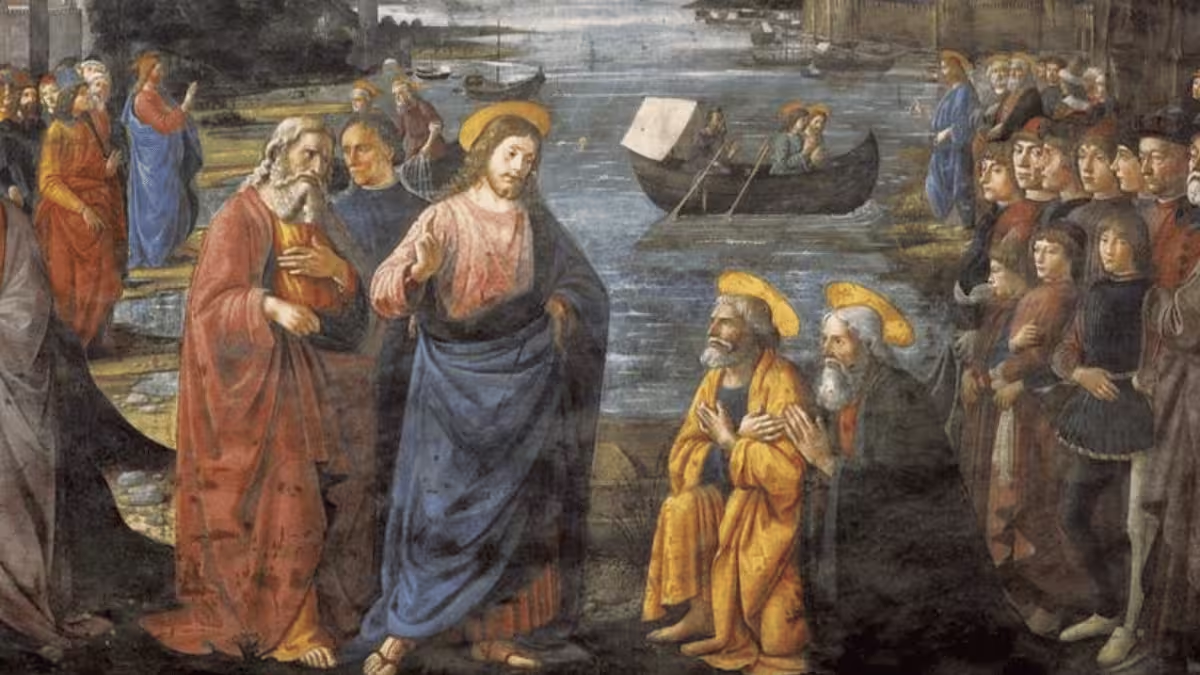
From that time on...
In the flow of Matthew’s gospel, Jesus has been baptized by John, lead by the Spirit into the wilderness and been tempted for 40 days and night. Now He emerges into the world and from that time on his pubic ministry was underway. The first action? Calling disciples to follow him and begin the mission to the world that all might be saved
As always, a lot going on in the gospel reading. Grab a cup of your favorite beverage and take a moment on the back porch with the Word of God.
Full Text of the Sunday Gospel
Detailed Commentary
Domenico Ghirlandaio: Calling of the First Apostles | 1481–82 | Sistine Chapel, Vatican | PD-US
4th Sunday, Year A

The Beatitudes
The gospel for this Sunday is the “Sermon on the Mount”, actually only the portion known as the Beatitudes. The disciples are gathered, but so too are people in general who have come to hear Jesus speak. The nature of the audience raises a basic question: what are the Beatitudes? Are the general ethic that God asks of he People of God? Is is a message about discipleship? Martin Luther thought it was an impossible demand like the Old Testament Law.
As always, a lot going on in the gospel reading. Grab a cup of your favorite beverage and take a moment on the back porch with the Word of God. Some think it is a description of the millennial kingdom for when Jesus returns. There is not shortage of views of “what they are.” And then we arrive at thee question of “what do they mean?”
As always, the living Word of God has a lot to ponder. Grab your favorite beverage and take some time of the back porch.
Full Text of the Sunday Gospel
Detailed Commentary
Image credit: Cosimo Rosselli Sermone della Montagna, 1481, Sistine Chapel, Public Domain
5th Sunday, Year A

Salt and Light
The gospel for the 5th Sunday of Ordinary Time, Year A is a part of the “Sermon on the Mount”,following immediately after the portion known as the Beatitudes. Famously, Jesus used the metaphors of “salt” and “light” to describe the nature and challenges of discipleship. Why those elements? Did they have a deeper and more robust meanings to the 1st century listener? Modern folks don’t have to think about salt – it is on the shelf of any grocery store. LIght? Flick a switch without giving it a second thought. Maybe we have lost part of the message along the way?
As always, a lot going on in the gospel reading. Grab a cup of your favorite beverage and take a moment on the back porch with the Word of God – and go back in time to the world of the first century. Grab your favorite beverage and take some time of the back porch.
Full Text of the Sunday Gospel
Detailed Commentary
Sermon on the Mount (1877) by Carl Heinrich Bloch | Museum of National History |
Frederiksborg Castle, Public Domain
6th Sunday, Year A

"You have heard it said..."
The gospel for the 6th Sunday of Ordinary Time, Year A is a part of the “Sermon on the Mount.” It follows the Beatitudes and Jesus’ use of the metaphors of “salt” and “light” to describe the nature and challenges of discipleship. Next Jesus speaks to the importance of the Law but begins to teach how to rightly understand the whole of Scripture: “the Law and the Prophets.” It is a rich teaching, complex, but one that continues to deepen the understanding of discipleship and reveal how Jesus himself is the fulfillment of all the promises of Scripture
As always, a lot going on in the gospel reading. Grab a cup of your favorite beverage and take a moment on the back porch with the Word of God – and go back in time to the world of the first century. Grab your favorite beverage and take some time of the back porch.
Full Text of the Sunday Gospel
Detailed Commentary
Sermon on the Mount (1877) by Carl Heinrich Bloch | Museum of National History |
Frederiksborg Castle, Public Domain
